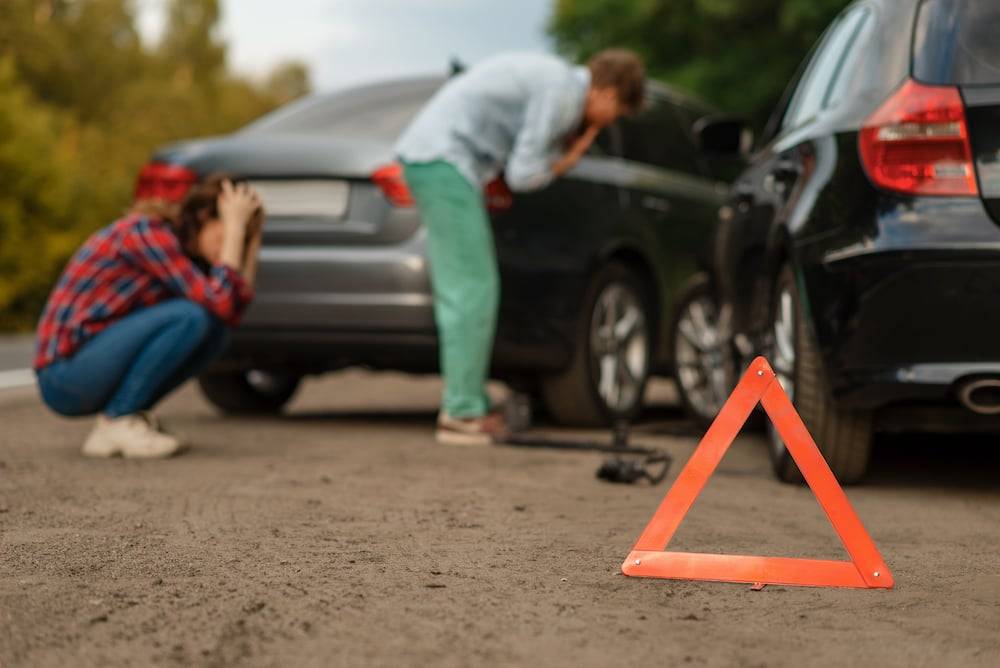There are an average of 6 million car accidents each year in the United States. More than 90 people die in car accidents every day. A portion of these accidents are incidents that involve T-bone collisions. T-bone collisions occur when one side of the vehicle is hit by the front of another vehicle. These accidents are also known as broadside collisions. T-bone accidents may occur in various situations, and it is not always clear which driver will be the at-fault party.
A vehicle might run a red light and broadside a vehicle passing through the intersection. These accidents can be especially catastrophic, sometimes causing the vehicle that has been hit to spin-out or roll over, depending on the force of the impact. T-bone accidents may also happen when a motorist cuts off another driver as they are making a left turn, causing the person who is driving straight to hit the passenger side of the turning driver’s vehicle. Other facts that may determine the severity of the T-bone accident include the following:
- Part of the vehicle that is struck
- Safety features present
- The speeds of both vehicles
- Vehicle weight and construction
Unlike accidents that involve rear-end collisions, T-bone accidents do not have a bumper, trunk, and additional seats to blunt the impact. The door and window are the only buffers when the vehicle is t-boned. Given this, it is understandable that about 13 percent of car accident fatalities involve T-bone accidents.
Common causes of T-bone accidents
Loss of traction control
Vehicles may lose traction on roads, depending on weather conditions and road conditions. As a result, the swerving vehicle may shift to the side, in which a vehicle in an oncoming lane might hit the vehicle that has slid.
Reckless driving
In the cases of reckless driving, such as high-speed driving or drunk driving, the driver may also lose control of the vehicle and swerve into the other lane, where vehicles in oncoming traffic may broadside it.
Running a red light
When a driver runs a red light and traverses an intersection, drivers with the green light may not have time to stop their vehicle and will strike the vehicle that has passed through the red light. Alternatively, a vehicle that has run a red light might strike another vehicle that has passed through a green light. Similar situations may arise at stop signs and intersections.
T-bone accident injuries
While advancements in vehicle manufacturing have added increased safety measures for drivers, some accidents may have too much force involved, leading to devastating and life-changing injuries. T-bone accidents may occur in residential and business areas or highways.
Liability in T-bone accidents
Several factors may determine which party is at-fault for the accident. Often, traffic signals will follow a schedule, so, if possible, make note of the time of the accident. The time might indicate whether the driver who struck the vehicle had the right of way or not. This might help your personal injury attorney have important evidence for your case.
The vehicle that struck the other vehicle might have had defective parts at work, contributing to the driver being unable to stop before colliding with the side of the other vehicle. In these cases, the brakes may have failed, the vehicle might not have undergone proper maintenance and therefore had a mechanical failure that contributed to the collision, or if the vehicle had been inspected without a necessary repair, other parties may be liable for the accident. At that particular point, it would be important for the vehicle to undergo further investigation to determine if the accident will involve shared liability.
While Florida law requires a police officer to come to the scene at any accident that involves over $500 of property damage or any injuries, the police officer may decide who is at-fault based on the details of the scene. If a police officer does determine fault at the scene, depending on the details of the accident and whether there are witnesses who have differing views, the party determined at-fault by the officer may report details to the car insurance company that reduces their liability.
What to do following a T-bone accident
- Check on all involved in the accident to see if they are “okay” or injured;
- If anyone is injured, call 911 right away;
- Protect your rights by contacting your attorney;
- Wait for the police to arrive, unless you feel you need to go in an emergency vehicle to the hospital
- Give your report on the accident to the police or trooper; and
- Seek medical attention as soon as possible, and most certainly within 14 days from the date of the accident
When giving a statement about the accident, it is important to never admit fault, but rather state the facts of what happened to a law enforcement officer. You may want to consult with an experienced lawyer prior to talking to the insurance company about what happened. Whether you have suffered mild to moderate, or more severe injuries, you will want to know your legal options to cover your damages.
Compensation that someone may receive after a T-bone accident includes the following:
- Medical expenses, such as emergency room visits, follow-up doctor appointment, surgeries related to the injuries from the accident, home care or rehabilitation costs and the cost of future medical care needs
- Lost wages, such past income that you lost due to missing work after becoming injured in the accident
- Loss of future income, if you cannot return to your work because of the injuries caused by the T-bone accident
- Pain and suffering

